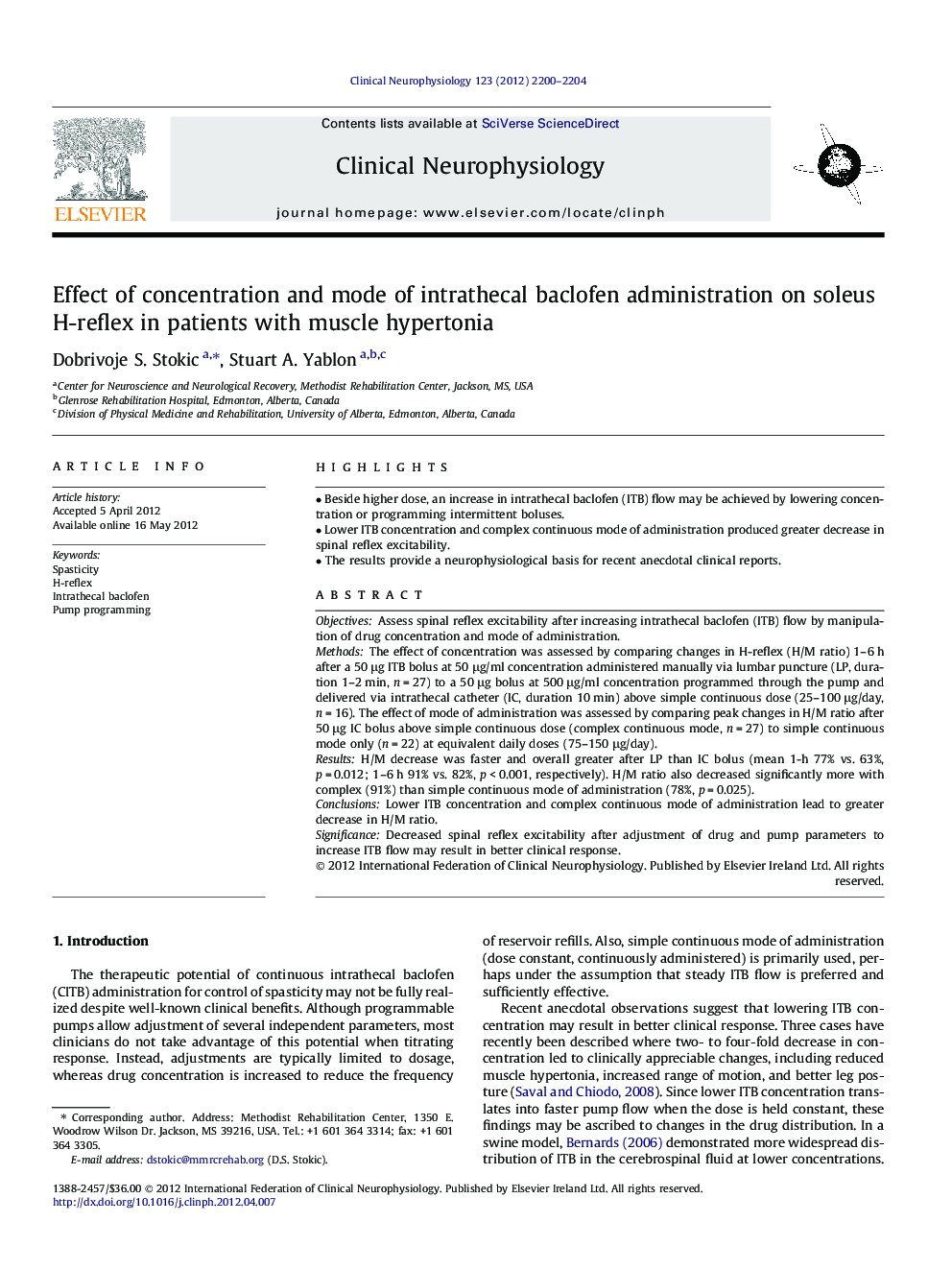| Article ID | Journal | Published Year | Pages | File Type |
|---|---|---|---|---|
| 3043109 | Clinical Neurophysiology | 2012 | 5 Pages |
ObjectivesAssess spinal reflex excitability after increasing intrathecal baclofen (ITB) flow by manipulation of drug concentration and mode of administration.MethodsThe effect of concentration was assessed by comparing changes in H-reflex (H/M ratio) 1–6 h after a 50 μg ITB bolus at 50 μg/ml concentration administered manually via lumbar puncture (LP, duration 1–2 min, n = 27) to a 50 μg bolus at 500 μg/ml concentration programmed through the pump and delivered via intrathecal catheter (IC, duration 10 min) above simple continuous dose (25–100 μg/day, n = 16). The effect of mode of administration was assessed by comparing peak changes in H/M ratio after 50 μg IC bolus above simple continuous dose (complex continuous mode, n = 27) to simple continuous mode only (n = 22) at equivalent daily doses (75–150 μg/day).ResultsH/M decrease was faster and overall greater after LP than IC bolus (mean 1-h 77% vs. 63%, p = 0.012; 1–6 h 91% vs. 82%, p < 0.001, respectively). H/M ratio also decreased significantly more with complex (91%) than simple continuous mode of administration (78%, p = 0.025).ConclusionsLower ITB concentration and complex continuous mode of administration lead to greater decrease in H/M ratio.SignificanceDecreased spinal reflex excitability after adjustment of drug and pump parameters to increase ITB flow may result in better clinical response.
